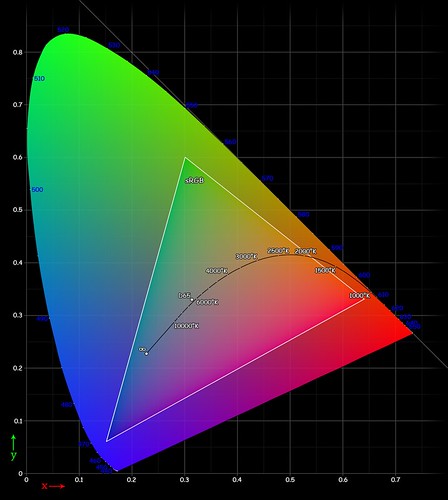RGB color models are very useful. A computer monitor typically has a large array of tiny red, green, and blue colored cells, these cells being so small that we cannot see them without a magnifying glass. The cells blend together to give us the other colors. For example, if the red and green cells are turned on, and blue is turned off, we are likely to get a shade of yellow. This physical process of mixing colors of light is very similar to how colors are defined in the various RGB color models: the primary red color in sRGB is defined as the three color numbers [255, 0, 0] and the computer monitor will likewise fully turn on the red cells while keeping the green and blue cells off. A particular medium gray color, defined in sRGB as [186,186,186] will cause the computer monitor to set the red, green, and blue cells to an intermediate value about halfway between fully on and fully off. Now, while no computer monitor or other digital imaging device has precisely the same properties of the sRGB standard, these are usually designed to be close enough for most purposes.
But there are some problems. First, you cannot mix red, green, and blue paint together to do decent painting, for we aren't mixing pure light, like on a computer screen, but rather are mixing together pigments which absorb some of the light falling on them, reflecting away the rest. And so, the RGB color system isn't particularly useful for painters, and is likely highly misleading: see the article Additive versus Subtractive Color. Furthermore, you cannot get all shades of colors by mixing together only three colors of lights.
The image below, called a CIE chromaticity diagram, shows the range of saturated colors that can be seen by the human eye:

[source]
The curved outline shows the full gamut of human vision, while the triangle within it shows the gamut of the sRGB color standard. If you use three primary colors for your standard, your available colors will be limited to only those colors within the triangle. sRGB excludes pure spectral violet, and deep scarlet red, and also neglects bright cyans and greens. Please note that this image itself is fully within the sRGB color standard, and so we cannot show you here the full range of visible colors, only the relative amount of color that can be represented by sRGB.